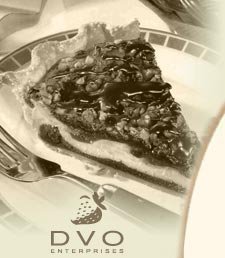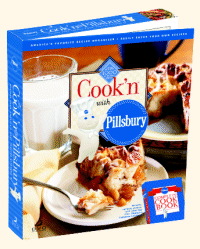
|
Never miss another recipe... Sign up for our free monthly newsletter today!
Subscribing will not result in more spam! I guarantee it! NEWSLETTER
• Current Issue• Newsletter Archive • Sign Up Now 
Cook'n with Betty Crocker 
Cook'n with Pillsbury 
Cook'n with a Taste of Home 
Cook'n in Italy 
Cook'n in Mexico |
 |
Other Important Nutrients |
|
Print this Recipe Besides fat and cholesterol, many other diet-related factors affect your health. Unlike fat and cholesterol, where the emphasis is on cutting back or limiting foods, most of the nonfat advice for a healthy eating plan involves adding foods to your menu and increasing their contributions to your diet. Some of the key heart-helping players include fiber, vitamin E and folic acid. Fiber Fiber is roughage. It’s the skins, seeds and hulls found in plant foods, such as fruits, vegetables and grains. Fiber can be divided into two types, soluble and insoluble fiber. Soluble fiber, as its name implies, dissolves in water. Soluble fiber slows the rate of digestion (how quickly the stomach empties), and it lowers the amount of insulin needed to take care of the food you have eaten. Soluble fiber may also lower total blood cholesterol, when it is part of a low-fat diet. It is believed to bind with cholesterol-carrying substances in the blood and escort them out of the body. Insoluble fiber helps keep food moving through your digestive system. The more fiber you eat, the better shape your digestive system is in and the more smoothly foods move through your body. Several studies have shown that fiber may also lower the risk for some cancers, including colon cancer. Both soluble and insoluble fiber may help you keep your weight in line, too. Fiber is filling, and because it slows digestion, you feel full longer. Foods high in fiber also tend to be naturally low in fat, such as fruits, veggies and whole grains. Currently, there is not official Recommended Dietary Allowance (RDA) for fiber, but the Daily Value (DV) set by the food and Drug Administration (FDA) is 25 grams a day. Most Americans get half of that amount. How do you get to 25 grams of fiber? It’s easy if you fill your day with five or more servings of fruits and vegetables or six or more servings of wholegrain breads, cereals and legumes (peas, beans, and lentils). Vitamin E Vitamin E shows a lot of promise as an important health-promoting nutrient. It is an antioxidant, which means it may be helpful in protecting the body from the damage caused by free radicals. Free radicals are believed to damage cells and DNA (your body’s code for reproducing cells). The damage these free radicals cause may lead to health problems, such as heart disease, cancer, cataracts and more. Few foods are good sources of vitamin E, and those that are, tend to be high in fat, such as vegetables oils, margarine and nuts. Whole-grain foods contain a small amount of vitamin E. The amount of vitamin E recommended for health promotion ranges from 100 International Units (IU) to 400 IU or more. Because food levels are significantly less, many people turn to supplements to cash in on vitamin E’s possible benefits. Before you do, check with your doctor. Fatigue and flu-like symptoms have been seen with levels above 800 IU. Vitamin E is not the only antioxidant vitamin. Vitamin C and beta carotene (a form of vitamin A) have also been shown to have potential health-promoting properties. However, the data on the role of these vitamins is fairly limited. Folic Acid Research shows that folic acid along vitamin B6 may work together to help heart health by lowering homocysteine levels in the blood. Homocysteine is an amino acid that moves through the blood much as cholesterol does. Normally, folic acid, vitamin B6 and other B vitamins help break down homocysteine. However, a genetic defect or a diet low in these nutrients can result in a buildup of homocysteine, which in turn may injure arteries in the body and lead to their clogging. Eating a diet rich in folic acid and B6 may help keep homocysteine from becoming an issue. Foods rich in these two nutrients include whole grains, fortified cerials and legumes. From "Betty Crocker's Low-Fat, Low-Cholesterol Cooking Today." Text Copyright 2005 General Mills, Inc. Used with permission of the publisher, Wiley Publishing, Inc. All Rights Reserved. This recipe comes from the Cook'n collection. Try Cook'n for FREE! Here’s to your health Fat Facts Understanding Cholesterol Other Important Nutrients Putting It All Together Reading a Nutrition Label Go Slow For Success Test Your Health IQ The Skinny on Fat Cholesterol Trimming Tips Nutritional Comparison |
|
|
Affiliate Program | Privacy Policy | Other Resources | Contact Us
© 2008 DVO Enterprises, Inc. All rights reserved. Sales: 1-888-462-6656 |

